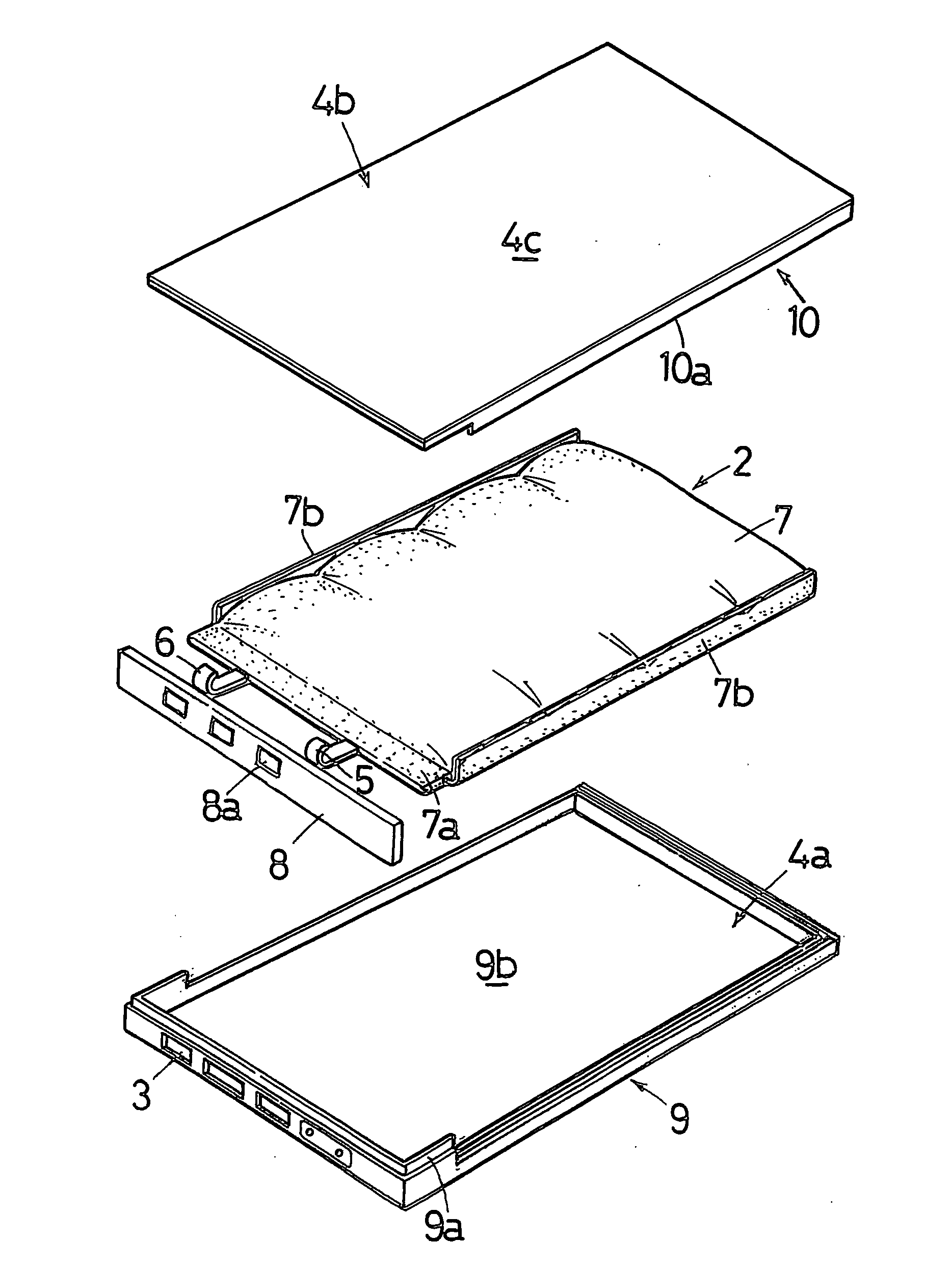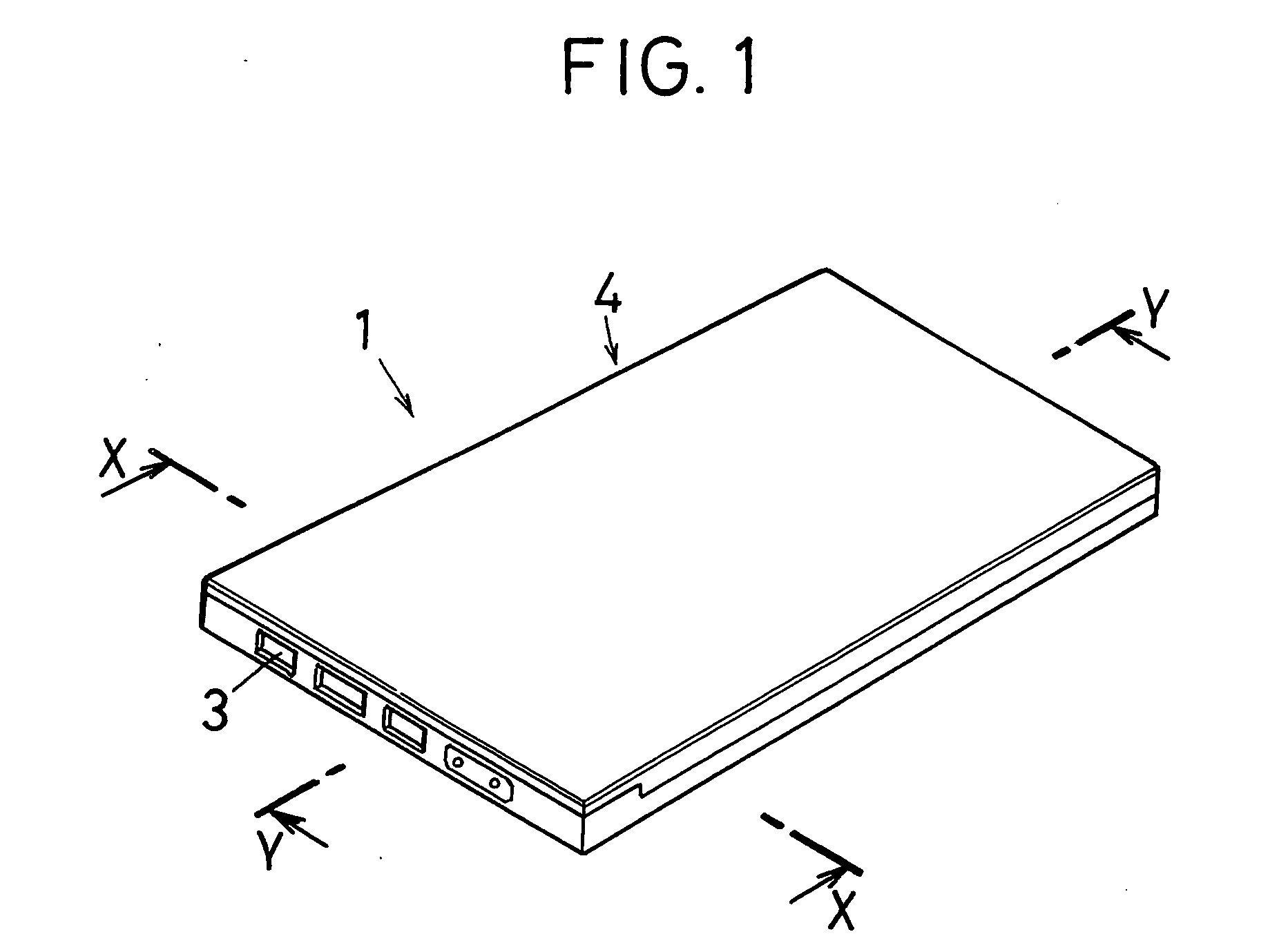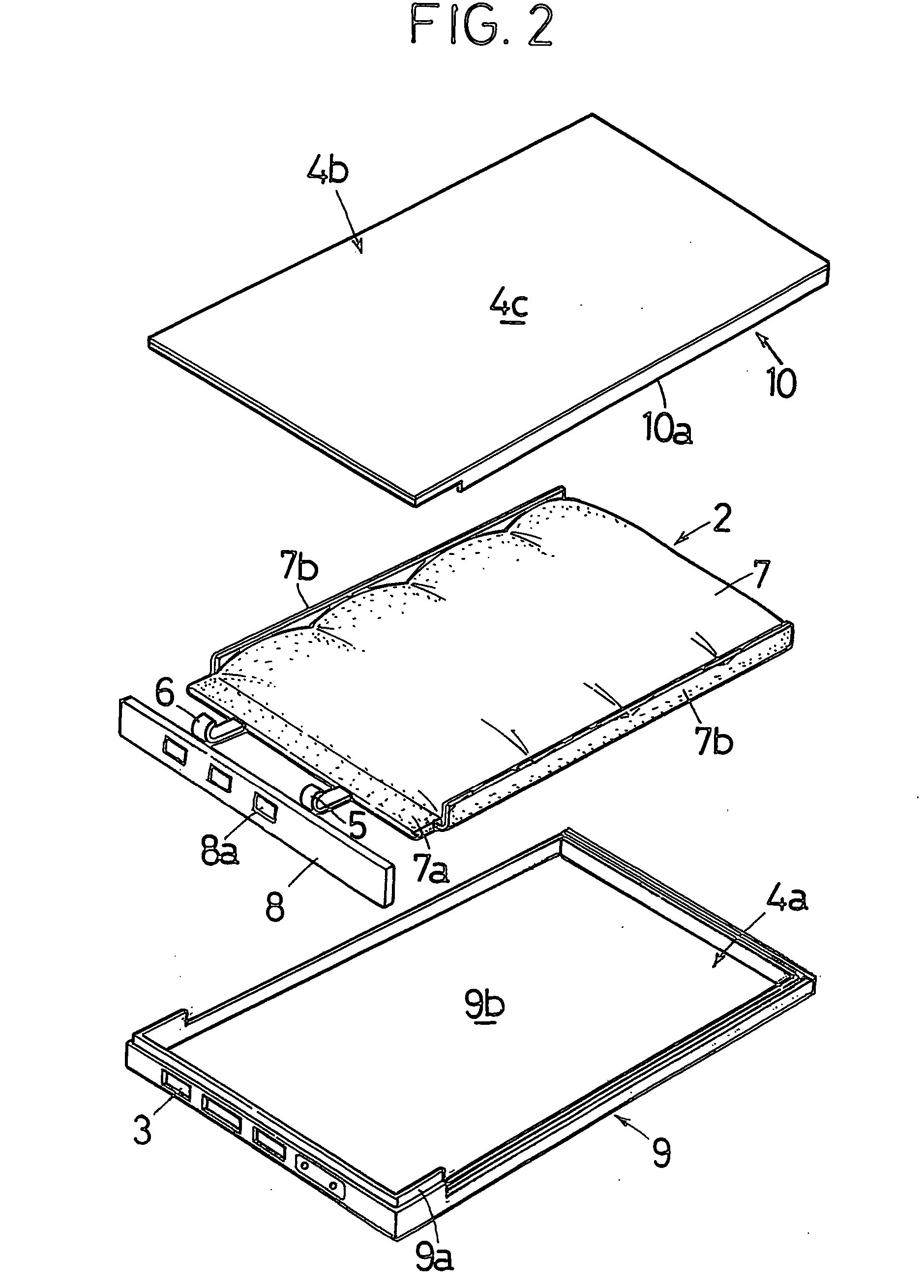Outer case for non-aqueous electrolyte battery and method of producing the same
a non-aqueous electrolyte battery and outer case technology, applied in the direction of cell components, cell component details, electrochemical generators, etc., can solve the problems of many problems to be solved, tubing may be partially wrinkled, and the conventional external packaging method has not yet satisfied all the demands, so as to improve the capacity-weight efficiency of the battery pack, ensure mechanical strength, and improve the effect of capacity-volume efficiency
- Summary
- Abstract
- Description
- Claims
- Application Information
AI Technical Summary
Benefits of technology
Problems solved by technology
Method used
Image
Examples
first embodiment
[First Embodiment]
[0058] A first embodiment of the present invention will be described below. FIG. 1 is an external view of a lithium-ion polymer secondary battery 1 to which the present invention is applied. FIG. 2 is an exploded view of the lithium-ion polymer secondary battery 1. FIG. 3 is a sectional view taken along the line X-X in FIG. 1. FIG. 4 is a sectional view taken along the line Y-Y in FIG. 1.
[0059] The lithium-ion polymer secondary battery 1 is a repeatedly rechargeable battery, which is used as a battery for a cellular phone or the like. The lithium-ion polymer secondary battery 1 is a thin and lightweight battery implemented by replacing an electrolytic solution with a gel-state polymer electrolyte. In this example, the lithium-ion polymer secondary battery 1 is a thin battery (e.g. 3.8 mm in thickness) implemented so as to be usable in a cellular phone or the like.
[0060] An outer casing 4 of the lithium-ion polymer secondary battery 1 is a synthetic resin casing-p...
third embodiment (
[Third Embodiment (Thermoforming of Sheet Material)]
[0090] In either of the foregoing first and second embodiments, the sheet material 4c of the cover 4b for forming a side of the outer casing 4 is formed into a predetermined shape in the injection-molding mold. In this embodiment, the sheet material is thermoformed before it is inserted into the injection-molding mold. FIG. 14 is a sectional view of a thermoforming die 25a for vacuum forming. As shown in FIG. 14, a sheet material 20b, which is a thermoplastic sheet, is fixed on the thermoforming die 25a and heated to soften with a heater 34. The softened sheet material 20b is sucked onto the thermoforming die 25a through a vacuum circuit 35 communicating with a vacuum device, thereby forming the sheet material 20b.
[0091] Thereafter, the outer periphery of the thermoformed sheet material 20b is trimmed with a cutting device (not shown). As shown in FIG. 15, the thermoformed and trimmed sheet material 20b is inserted into an injecti...
fourth embodiment
[Fourth Embodiment] (Thermoforming of Sheet Material)
[0093] A fourth embodiment is the same as the third embodiment in that the sheet material is thermoformed before it is inserted into an injection-molding mold. The fourth embodiment is also the same as the third embodiment in that the outer periphery of the thermoformed sheet material 20c is trimmed with a cutting device (not shown). As shown in FIG. 18, however, the thermoformed and trimmed sheet material 20c has burr 31 occurring on the cut surface as a result of the cutting process.
[0094] It is necessary to carry out a deburring step of removing the burr 31 before or after ultrasonic welding performed with an ultrasonic welding apparatus after the above-described injection molding. This embodiment enables the deburring step to be omitted. An outer peripheral portion 32 of the sheet material 20c constituting the cover outer peripheral frame 10 is cut shorter than the thickness h (see FIG. 19) of the cover outer peripheral frame...
PUM
| Property | Measurement | Unit |
|---|---|---|
| thickness | aaaaa | aaaaa |
| thickness | aaaaa | aaaaa |
| thickness | aaaaa | aaaaa |
Abstract
Description
Claims
Application Information
 Login to View More
Login to View More - R&D
- Intellectual Property
- Life Sciences
- Materials
- Tech Scout
- Unparalleled Data Quality
- Higher Quality Content
- 60% Fewer Hallucinations
Browse by: Latest US Patents, China's latest patents, Technical Efficacy Thesaurus, Application Domain, Technology Topic, Popular Technical Reports.
© 2025 PatSnap. All rights reserved.Legal|Privacy policy|Modern Slavery Act Transparency Statement|Sitemap|About US| Contact US: help@patsnap.com



